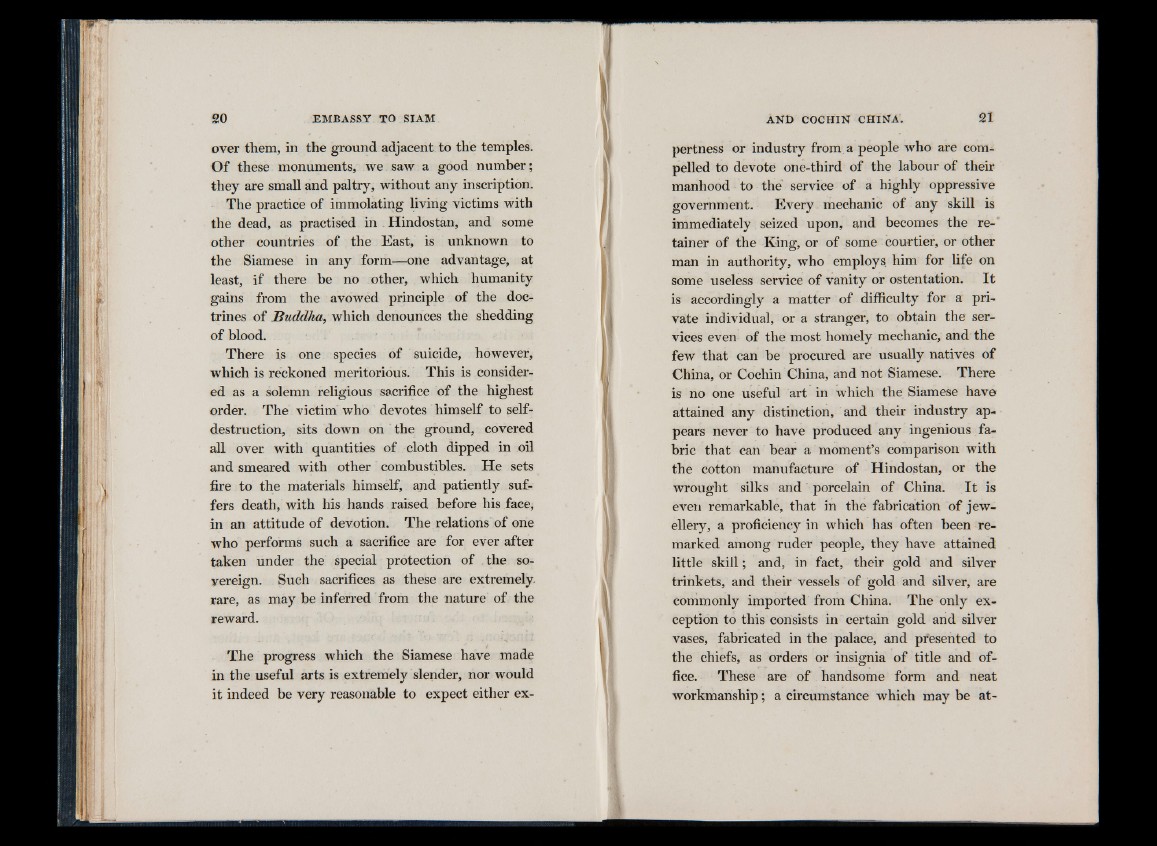
over them, in the ground adjacent to the temples.
Of these monuments, we saw a good number;
they are small and paltry, without any inscription.
The practice of immolating living victims with
the dead, as practised in Hindostán, and some
other countries of the East, is unknown to
the Siamese in any form—one advantage, at
least, if there be no other, which humanity
gains from the avowed principle of the doctrines
of Buddha, which denounces the shedding
of blood.
There is one species of suicide, however,
which is reckoned meritorious. This is considered
as a solemn religious sacrifice of the highest
order. The victim who devotes himself to self-
destruction, sits down on the ground, covered
all over with quantities of cloth dipped in oil
and smeared with other combustibles. He sets
fire to the materials himself, and patiently suffers
death, with his hands raised before his face,
in an attitude of devotion. The relations of one
who performs such a sacrifice are for ever after
taken under the special protection of the sovereign.
Such sacrifices as these are extremely
rare, as may be inferred from the nature of the
reward.
The progress which the Siamese have made
in the useful arts is extremely slender, nor would
it indeed be very reasonable to expect either expertness
or industry from a people who are compelled
to devote one-third of the labour of their
manhood to the service of a highly oppressive
government. Every mechanic of any skill is
immediately seized upon, and becomes the retainer
of the King, or of some courtier, or other
man in authority, who employs him for life on
some useless service of vanity or ostentation. I t
is accordingly a matter of difficulty for a private
individual, or a stranger, to obtain the services
even of the most homely mechanic, and the
few that can be procured are usually natives of
China, or Cochin China, and not Siamese. There
is no one useful art in which the Siamese have
attained any distinction, and their industry appears
never to have produced any ingenious fabric
that can bear a moment’s comparison with
the cotton manufacture of Hindostán, or the
wrought silks and porcelain of China. I t is
even remarkable, that in the fabrication of jewellery,
a proficiency in which has often been remarked
among ruder people, they have attained
little skill; and, in fact, their gold and silver
trinkets, and their vessels of gold and silver, are
commonly imported from China. The only exception
to this consists in certain gold and silver
vases, fabricated in the palace, and presented to
the chiefs, as orders or insignia of title and office.
These are of handsome form and neat
workmanship; a circumstance which may be at